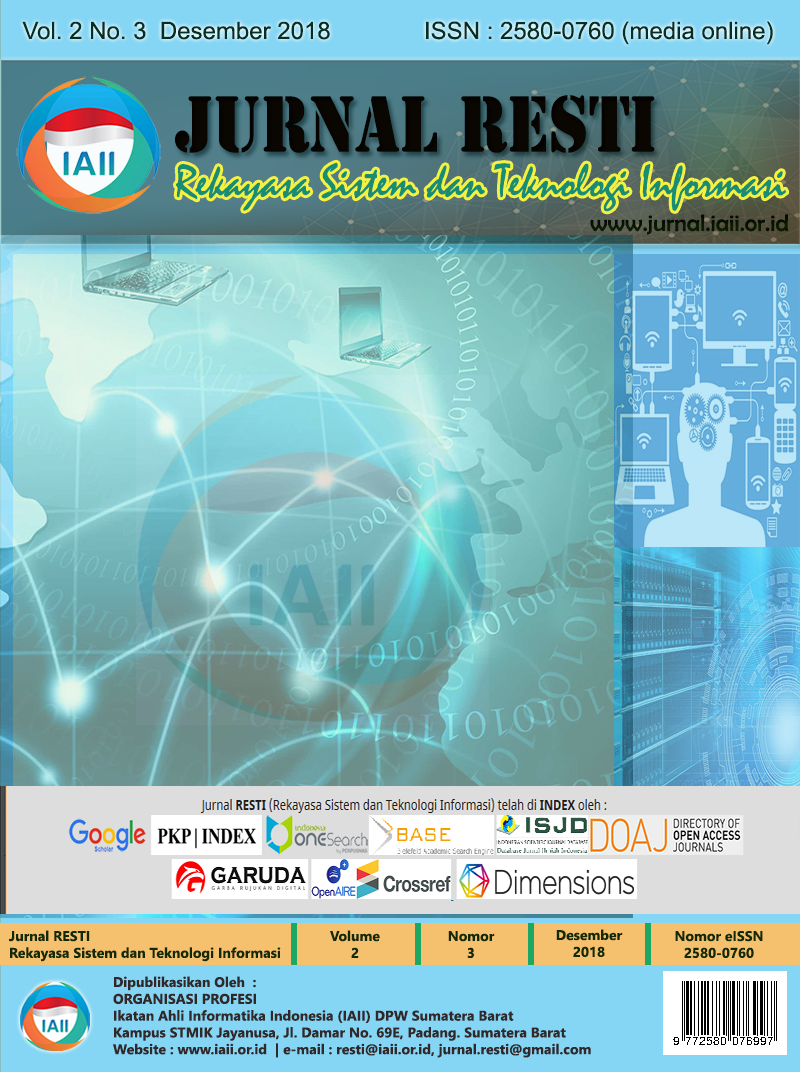Implementasi Analisis NIDS Berbasis Snort Dengan Metode Fuzy Untuk Mengatasi Serangan LoRaWAN
Abstract
Indonesia is one of agrarian countris which has a fertile soil condition, but the agricultural products nowadays are not maximal in certain areas particularly strawberry plantation. Strawberry plant it self needs precise temperature and humidity level to maximize strawberry harvest. Soil humidity and air temperature are changing many times caused by the weather. Therefore, this research will build a prototype which is called Smart Agriculture for monitoring the temperature and soil humidity in strawberry plantation. Temperature and soil humidity data will be sent through wireless transmission media to smartphone using LoRa and LoRaWAN technology. This technology could send the data in a long distance but it's server is vulnerable to attacks such as flooding payload data from LoRa node, ping of death or ping flooding, and scanning port. This research implements that attack on LoRaWAN network server which influences server bandwidth , delay, jitter, and throughput from normal condition. To detect an attack, Snort NIDS method and attack classification are used with fuzzy logic method. The result of this research are temperature and humidity readings, attack notification, and attacker address blocking. Besides, it has proven that fuzzy and snort can optimize server performance.
Downloads
References
[2] Alnabulsi, H., Islam, M. R., & Mamu, Q. (2014). Detecting SQL Injection attacks using SNORT IDS. IEEE.
[3] Alsubhi, K., Boutaba, R., & Al-Shaer, E. (2008). Alert prioritization in Intrusion Detection Systems. IEEE.
[4] Andrei, M. L., Radoi, A., & Tudose, S. (2017). Measurement of Node Mobility for the LoRa Protocol . IEEE.
[5] Budiman, S. A., Iswahyudi , C., & Sholeh, M. (2014). Implementasi Intrusion Detection System (IDS) Menggunakan Jejaring Sosial Sebagai Media Notifikasi. Prosiding Seminar Nasional Aplikasi Sains and Teknologi .
[6] Cox, E. (1994). The Fuzzy System Handbook. Academic Press - Inc.
[7] Dewi, E. K., & Kasih, P. (2017). Analisis Log Snort Menggunakan Network Forensik. Jurnal Ilmiah Penelitian dan Pembelajaran Informatika, vol 2, no 2.
[8] El-Hajj, W., Aloul, F., & Trabelsi, Z. (2008). On Detecting Port Scanning using Fuzzy Based Intrusion Detection System. IEEE.
[9] Elvira, F., Duskarnaen, M. F., Z, B., & Isharyanto, B. (2010). Sistem Keamanan Jaringan Komputer Dengan Menggunakan Firewall Iptables dan Snort. Universitas Negeri Jakarta.
[10] Kontogiannis, S., Kokkonis, G., Ellinidou, S., & Valsamidis, S. (2017). Proposed Fuzzy-NN Algorithm with LoRa Communication Protocol for Clustered Irrigation Systems. MDPI, Future Internet.
[11] Kuswardani. (2011). Sistem Deteksi Dan Penanganan Intruisi Menggunakan Snort dan Base Implementasi Pada Pt. Oasys Solusi Teknologi.
[12] Lavric, A., & Popa, V. (2017). LoRa Wide-Area Networks from an Internet of Things Prespective. ECAI.
[13] Nugroho, I. W., Harianto, & Mardiana, I. G. (2014). Rancang Bangun Aplikasi Intrussion Detection System Dengan Menggunakan Metode Fuzzy. stikom, vol 3, no 1.
[14] Sembiring, I., Widiasari, I. R., & Prasetyo , S. D. (2009). Analisa dan Implementasi Sistem Keamanan Jaringan Komputer dengan Iptables sebagai Firewall Menggunakan Metode Port Knocking. Univeritas Kristen Satya Wacana.
[15] Tiyas , F. I., Hadi, M. Z., & K, E. M. (2011). Aplikasi Web untuk Metode Fuzzy Neural Network pada Intrusion Detection System Berbasis Snort. Pens Institut Teknologi Sepuluh Nopember Surabaya.
Copyright (c) 2018 Jurnal RESTI (Rekayasa Sistem dan Teknologi Informasi)

This work is licensed under a Creative Commons Attribution 4.0 International License.
Copyright in each article belongs to the author
- The author acknowledges that the RESTI Journal (System Engineering and Information Technology) is the first publisher to publish with a license Creative Commons Attribution 4.0 International License.
- Authors can enter writing separately, arrange the non-exclusive distribution of manuscripts that have been published in this journal into other versions (eg sent to the author's institutional repository, publication in a book, etc.), by acknowledging that the manuscript has been published for the first time in the RESTI (Rekayasa Sistem dan Teknologi Informasi) journal ;







